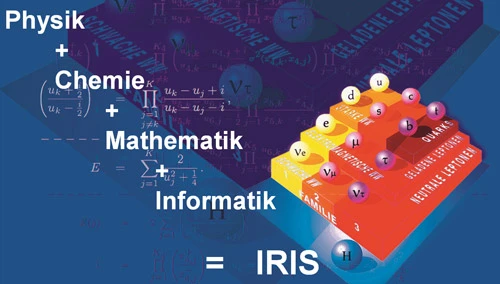Research without limits: IRIS, an interdisciplinary integrative research institute, opens its doors
Perfectly structured semiconductor surfaces? No problem for physicists. Electrically conducting layers of macromolecules or isolated DNA? Chemists turf this out in excellent qualities. But how can the two be brought together? Here too, the whole is more than the sum of its parts: inorganic-organic hybrid materials can exhibit completely new and unexpected electronic, chemical, or optical properties and so present an all new potential, e.g. for solar cells, LEDs, storage media, etc. At the same time, mathematics and computer sciences help to calculate these properties.
“Problems don’t stop at disciplinary borders,” explained Nikolai Puhlmann. For this reason, excellent Berlin researchers teamed up on the Adlershof campus and founded the new Integrative Research Institute for the Sciences, or IRIS Adlershof, that was inaugurated on 12 July 2010. “With this we intend to provide major, interdisciplinary research projects with a new kind of institutionalised setting,” said Puhlmann, Managing Director of IRIS. “On the other hand, it was never our intention to be a rival to the established institutes of physics, chemistry, mathematics, or computer sciences of Humboldt University or the nonuniversity research institutes.” The scientists continue their employment there. Rather, the intention is to provide facilities for bundling better the large number of competences, profiting in particular from the excellent conditions on the Adlershof campus and the vicinity to nonuniversity research institutes and companies strong in research.
The latter are to use for instance the new open access labs that will be set up. These laboratories are fitted for their respective disciplines, and the current discipline is hybrid materials. “By integrating high tech companies we expect new ideas for application oriented aspects,” explained Puhlmann.
The stuff keeping the new institute together takes the form of interdisciplinary research in the special fields of the involved institutes: modern optics, molecular systems, mathematical physics, and computer aided modelling. These benefit not only from the development of hybrid materials. Also quite fundamental problems of mathematical physics can be researched under the IRIS umbrella: for instance, the age old dream of the theory of everything that from simple principles can derive the structure of space, time, and material on very large and very small scales and in complex systems. “We are open to a diverse range of projects that scientists from different disciplines want to research jointly,” stressed Puhlmann. And it can prove an advantage, when raising research funds, that they are backed by an institution that can also offer administrative support and safeguard sustainability.
Incidentally, a fair share of the thought has also gone to the next generation of scientists. At Humboldt-ProMINT-Kolleg, teachers can join forces with students and scientists in elaborating new learning and teaching concepts for schools and teacher training and in providing practical courses at Adlershof companies and institutes where unusual insights can be gained into the present practices of research and development. IRIS is being funded at present from startup aid provided by Humboldt University, and there are still ongoing negotiations with the State of Berlin. Over the medium term most of the funding for IRIS is to come from capital raised by third parties.
by Uta Deffke
Link: www.iris-adlershof.de
